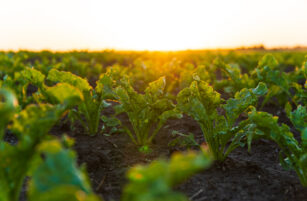Insight Focus
All ethanol feedstock restrictions have been lifted. Both raw sugar and white sugar export margins are positive. The government has not authorised any sugar exports for 2024/25.
Introduction
India, the world’s second-largest producer of sugar, aims to blend 20% ethanol in gasoline by 2025.
This ethanol will be made from sugar cane and various grain feedstocks, which means many Indian mills now have a choice about how they use the sucrose in the cane. We will show the choices they are making in this report.
Maharashtra Sugar Imports/Exports
Domestic sugar prices are trading lower than last month at INR 36,600/tonne.

Raw sugar export margins are positive again, and if mills were to export at today’s prices, they would earn 0.5c/lb over the domestic price.

Refined sugar margins are also positive as mills would earn USD 11/mt if they were able to export today.
The government hasn’t authorised sugar exports for the upcoming 2024/25 production season. Therefore, the above discussion remains theoretical.


All feedstock restrictions for ethanol production have been lifted, which makes it more likely that sugar exports may not be authorised for longer. The earliest the government may consider sugar exports is at the start of 2025 when it has a better idea of sugar stock levels and expected output in 2024/25.
The government’s main concerns will be to ensure there is enough sugar supply for domestic consumption as well as ethanol blending and will periodically review the diversion of sugar to ethanol production.
Ethanol vs Sugar
Many mills/distilleries have a choice over which feedstocks they use to make sugar or ethanol based on the relative prices of ethanol paid by the oil marketing companies.

Monsoon rains were good over the past month as India on a whole received 6% more rain year on year by the 12th of August. Rainfall is of course positive for sugarcane growth and could potentially lead to better yields next season.
Earlier in the year mills were incentivised to use C-molasses instead of B-molasses and cane juice. All feedstock restrictions have now been lifted meaning; mills can produce ethanol from any cane feedstock. The revenue generated by the mills based on the type of feedstock used can be seen in the chart below:


The government has been hinting at potentially increasing ethanol prices, but this is yet to be confirmed. Here are the current prices paid for ethanol by feedstock:

Appendix















